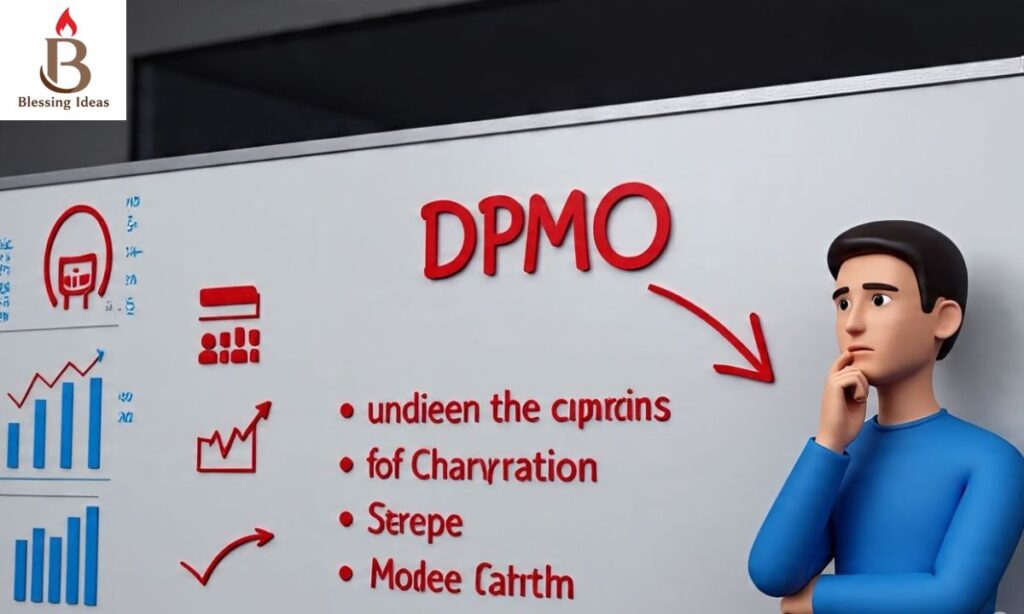In our rapidly evolving digital landscape, acronyms have become essential tools for quick communication. DPMO is one such acronym that serves multiple purposes across different contexts. Whether you’re working in quality management or chatting with friends, understanding DPMO’s various meanings will enhance your communication effectiveness.
This comprehensive guide will explore DPMO’s definitions, origins, and practical applications to help you use it confidently in any situation.
What Does DPMO Mean?
DPMO primarily stands for Defects Per Million Opportunities, a crucial metric in Six Sigma methodology and quality management systems. This statistical measurement helps organizations quantify process performance by calculating the number of defects occurring in one million opportunities.
In professional settings, DPMO serves as a benchmark for excellence. Companies strive for lower DPMO values, indicating fewer defects and higher quality standards.
However, in casual digital communication, DPMO takes on a completely different meaning: “Don’t Piss Me Off.” This informal interpretation reflects the modern tendency to abbreviate expressions for quick texting and social media interactions.
Understanding both meanings ensures you can navigate professional discussions and casual conversations with equal confidence.
Origins of DPMO
The professional usage of DPMO originated from Six Sigma methodology, developed by Motorola in the 1980s. This revolutionary approach to quality improvement aimed to reduce manufacturing defects to near-zero levels.
Six Sigma’s statistical foundation made DPMO an essential measurement tool. By tracking defects per million opportunities, companies could identify problem areas and implement targeted improvements.
The casual interpretation emerged much later through internet culture and text messaging. As digital communication evolved, users began creating abbreviations for common expressions, including phrases that convey frustration or annoyance.
Social media platforms and messaging apps accelerated this trend, making acronyms like DPMO popular among younger generations.
When to Use DPMO in Professional Settings
Professional environments demand precise communication, making DPMO’s technical definition most appropriate. Here are key scenarios for professional usage:
Quality Control Meetings: “Our current DPMO stands at 180, indicating room for improvement in our manufacturing process.”
Performance Reviews: “The implementation of new quality measures reduced our DPMO by 35% this quarter.”
Project Reports: “Maintaining a DPMO below 100 demonstrates our commitment to excellence and customer satisfaction.”
Training Sessions: “Understanding DPMO calculations helps team members identify quality improvement opportunities.”
Continuous Improvement Discussions: “Regular DPMO monitoring ensures we maintain high standards while reducing operational costs.”
These professional applications emphasize data-driven decision-making and measurable outcomes.
Using DPMO Casually (Texting and Social Media)
Casual contexts allow for more creative and expressive communication. DPMO’s informal meaning fits perfectly into everyday digital interactions:
Text Messages: “I told you I’m running late. DPMO with the constant calling!”
Social Media Posts: “When people don’t use turn signals… DPMO 😤”
Group Chats: “Stop sending spoilers about the show. DPMO!”
Gaming Communication: “Lag is killing my gameplay. DPMO!”
Friend Conversations: “You ate my lunch again? DPMO dude!”
This casual usage adds personality to digital communication while expressing mild frustration or playful annoyance.
Alternatives to DPMO (Professional Context)
Professional communication benefits from varied terminology to avoid repetition and ensure clarity:
Defect Rate: A straightforward term indicating the percentage of defective items in a process.
Error Frequency: Emphasizes how often mistakes occur within specific timeframes.
Quality Index: A broader metric encompassing various quality measurements.
Process Yield: Focuses on the percentage of successful outputs from a process.
Failure Rate: Highlights the proportion of items that don’t meet quality standards.
Example: “Our defect rate decreased by 3% following the implementation of new quality protocols.”
Alternatives to DPMO (Casual Context)
Casual communication offers numerous alternatives to express similar sentiments:
Chill Out: A gentler way to ask someone to relax or calm down.
Cut It Out: Direct but friendly request to stop annoying behavior.
Don’t Test Me: More assertive alternative with serious undertones.
Back Off: Clear boundary-setting phrase for persistent behavior.
Give Me Space: Polite way to request some breathing room.
Stop Bugging Me: Playful but clear expression of annoyance.
Example: “I said I’ll call you later. Just chill out for a bit!”
How to Choose the Best Alternative
Selecting appropriate alternatives depends on several factors:
Professional Settings: Prioritize clarity and precision. Use universally understood terms that maintain professional tone while conveying accurate information.
Casual Conversations: Consider your relationship with the person and the conversation’s mood. Close friends might appreciate direct expressions, while acquaintances prefer gentler alternatives.
Cultural Context: Some phrases may have different interpretations across cultures or age groups. Choose alternatives that align with your audience’s background.
Communication Medium: Email requires more formal language than text messages. Adjust your choice based on the platform you’re using.
Severity of Situation: Match the intensity of your alternative to the actual level of frustration or annoyance you’re experiencing.
Texting Examples of DPMO and Alternatives

Here are practical examples showing DPMO and alternatives in action:
Friend: “Are you still coming to dinner?” You: “Yes, I’m on my way. DPMO!”
Sibling: “You left dishes in the sink again.” You: “I’ll clean them later. Cut it out!”
Coworker: “When will you finish that report?” You: “By end of day. Don’t test me!”
Parent: “You never call anymore.” You: “I called yesterday. Chill out!”
Roommate: “Your music is too loud.” You: “I’ll turn it down. Give me space!”
Friend: “Why didn’t you respond to my texts?” You: “I was in a meeting. Back off!”
Partner: “You forgot to pick up groceries.” You: “I’ll go now. Stop bugging me!”
Group Chat: “We’re waiting for you to start the game.” You: “Loading up now. DPMO!”
These examples demonstrate natural usage patterns while maintaining appropriate tone for different relationships.
Conclusion
DPMO’s dual nature as both a technical metric and casual expression makes it a versatile addition to your communication toolkit. Understanding when and how to use each meaning prevents misunderstandings and enhances your effectiveness in various contexts.
Whether you’re discussing quality improvement initiatives in a boardroom or expressing playful frustration with friends, DPMO and its alternatives provide flexibility and precision in communication.






